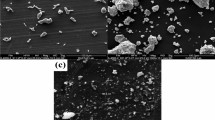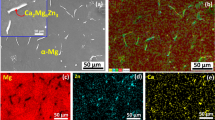Abstract
Degradation and polymerization of polyoxymethylene homopolymer (POM-H) surfaces after sliding at 8 to 150 MPa and 0.005 m/s over a total sliding distance of 3000 m is investigated by using thermal analysis (DSC, TGA, DTA) and Raman spectroscopy of worn surfaces or wear debris. There is mainly mechanical interaction and slight softening at 8 MPa (relatively high friction, low wear), softening at 16 to 55 MPa (decreasing friction and high wear) and finally melting at 150 MPa (very low friction, overload wear). At low contact pressures, wear debris remains amorphous and degradation of noncrystallised material during sliding manifests in broadening of the melting peak below the melting temperature. Degradation of C–O–C due to chain scission and radical reactions into CH3 end groups are illustrated by Raman spectra. It is confirmed that the debris has long resident times and the maximum polymer surface temperature (T* = 93°C) is below the crystallisation temperature. At intermediate contact pressures, crystallisation results in a polymer fraction with higher thermal resistance. From the calculated temperatures T* = 120 to 150°C, crystallisation is beneficial for coherent transfer with larger particle sizes. At high contact pressures, the wear debris is immediately removed from the contact interface due to melting (T* = 200°C) and has thermal properties similar to the bulk material. There is no reaction between the debris in the interface, resulting in a thick polymer transfer film.









Similar content being viewed by others
References
Ohlin A, Linder L (1993) Biomaterials 14:285
Shen C, Dumbleton JH (1976) Wear 38:291
Shen C, Dumbleton JH (1976) Wear 40:371
Samyn P, De Baets P (2005) Mat Sci Forum 475–479:1077
Breeds AR, Kukureka SN, Mao K et al (1993) Wear 166:85
Kukureka SN, Chen YK, Hooke CJ et al (1995) Wear 185:1
Clerico M (1980) Wear 64:259
Dziadur W (2001) Mater Char 46:131
Dziadur W, Litak A, Kuciel S et al (1997) In: Proceedings VIIIth 1997 seminar plastics in machine design, Cracow, Poland, 22–24 October
Engel PA, Zhao Z (1996) Wear 193:114
Palanivelu K, Balakrishnan S, Rengasamy P (2000) Polym Test 19:75
Uetz H, Wiedmeyer J (eds) (1985) Carl Hanser Verlag, Munchen
Stuart BH (1997), Spectrochim Act A 53:111
Billmayer FW (ed) (1984) Wiley, New York
Quadrant EPP (2002), General purpose plastic products, design manual, http://www.quadrantplastics.com . Cited 29 May 2007
Unal H, Sen U, Mimaroglu A (2000) Tribol Internat 37:727
Seabra LC, Baptista AM (2002) Wear 253:394
Samyn P, Tuzolana T, Polym Test (2007) (in press)
Samyn P, De Baets P (2005) Tribol Letters 19:177
Pascoe MW, Tabor D (1955) Proc R Soc London, A 235:210
Visanawath N, Bellow DG (1995) Wear 181–184:42
Jaeger CJ (1942), Proc R Soc NSW 76:1107
Franklin SE, de Kraker A (2003) Wear 255:766
Odi-Owei S, Schipper DJ (1991) Wear 148:363
Mergler YP, Schaake RP, Huis in ‘t Veld AJ (2004) Wear 256:294
Zhao R (2005) INJ Summer 19
Fakirov S, Fisher EW, Hoffman R, et al (1977) Polymer 18:1121
Everaert V, Groeninckx G, Aerts L (2000) Polymer 41:1409
Hasegawa S, Takeshita H, Yoshii F et al (2000) Polymer 41: 111
Samyn P (2007) Dissertation, Ghent University
Stuart BH (1998) Tribol Internat 31:687
Furlani M, Ferry A, Franke A, et al (1998) Solid State Ionics 113–115:129
Li TQ, Zhang MQ, Song L, Zeng HM (1999) Polymer 40:4451
Blach JA, Watson GS, Brown CL, et al (2004) Thin Solid Films 459:95
Author information
Authors and Affiliations
Corresponding author
Rights and permissions
About this article
Cite this article
Samyn, P., Van Driessche, I. & Schoukens, G. Thermal and spectroscopic analysis of worn polyoxymethylene surfaces and wear debris explaining degradation and polymerisation mechanisms. J Polym Res 14, 411–422 (2007). https://doi.org/10.1007/s10965-007-9124-8
Received:
Accepted:
Published:
Issue Date:
DOI: https://doi.org/10.1007/s10965-007-9124-8




